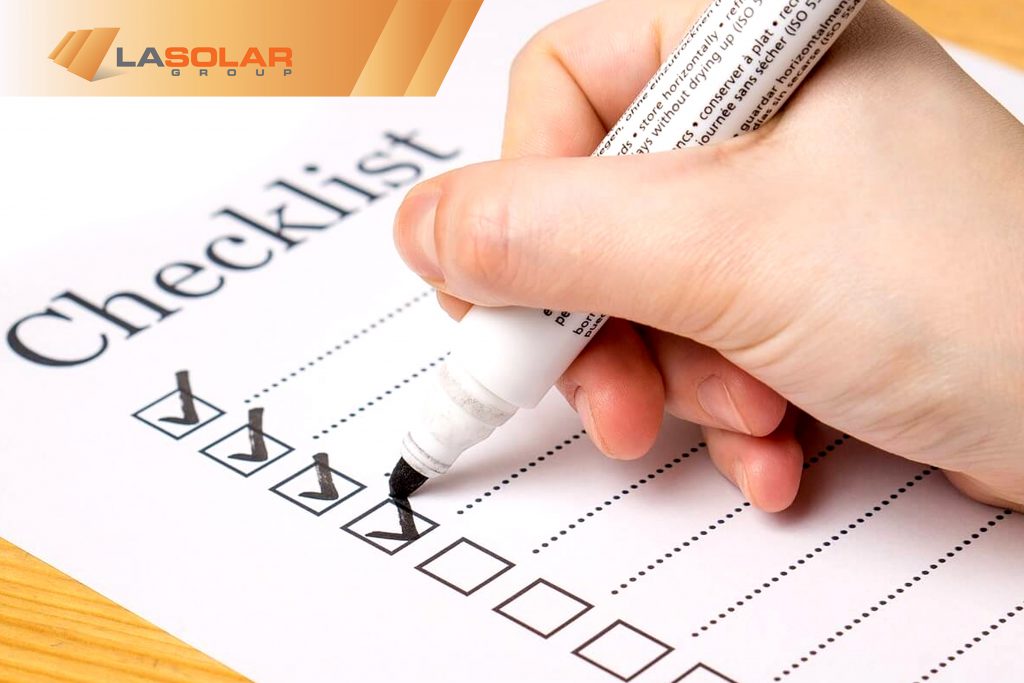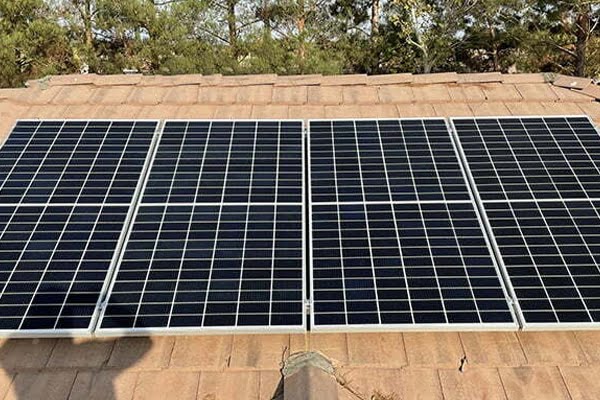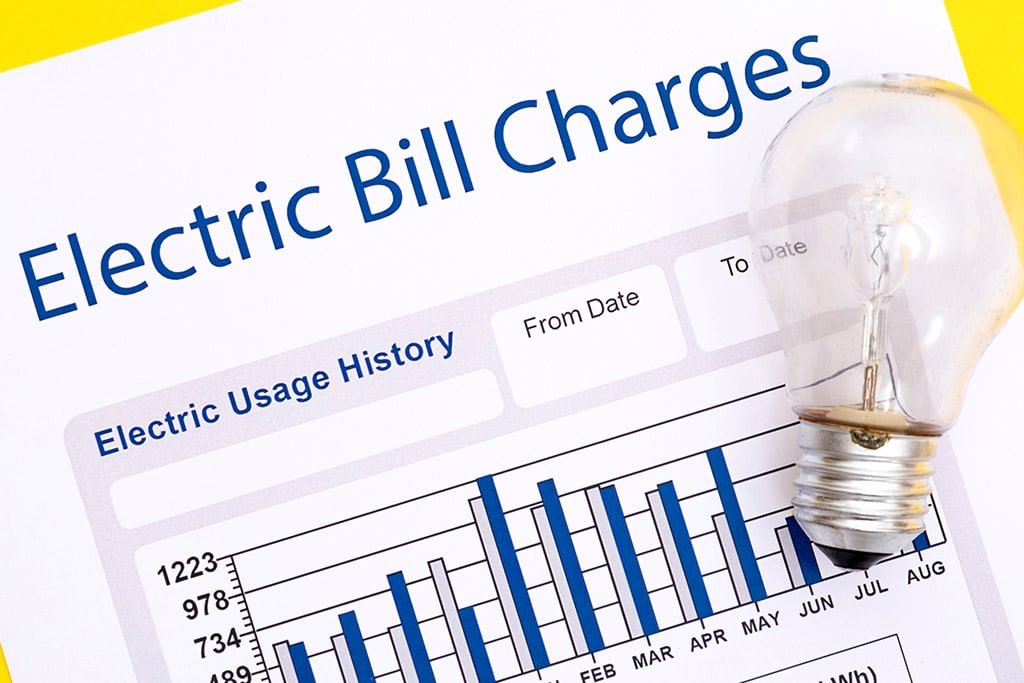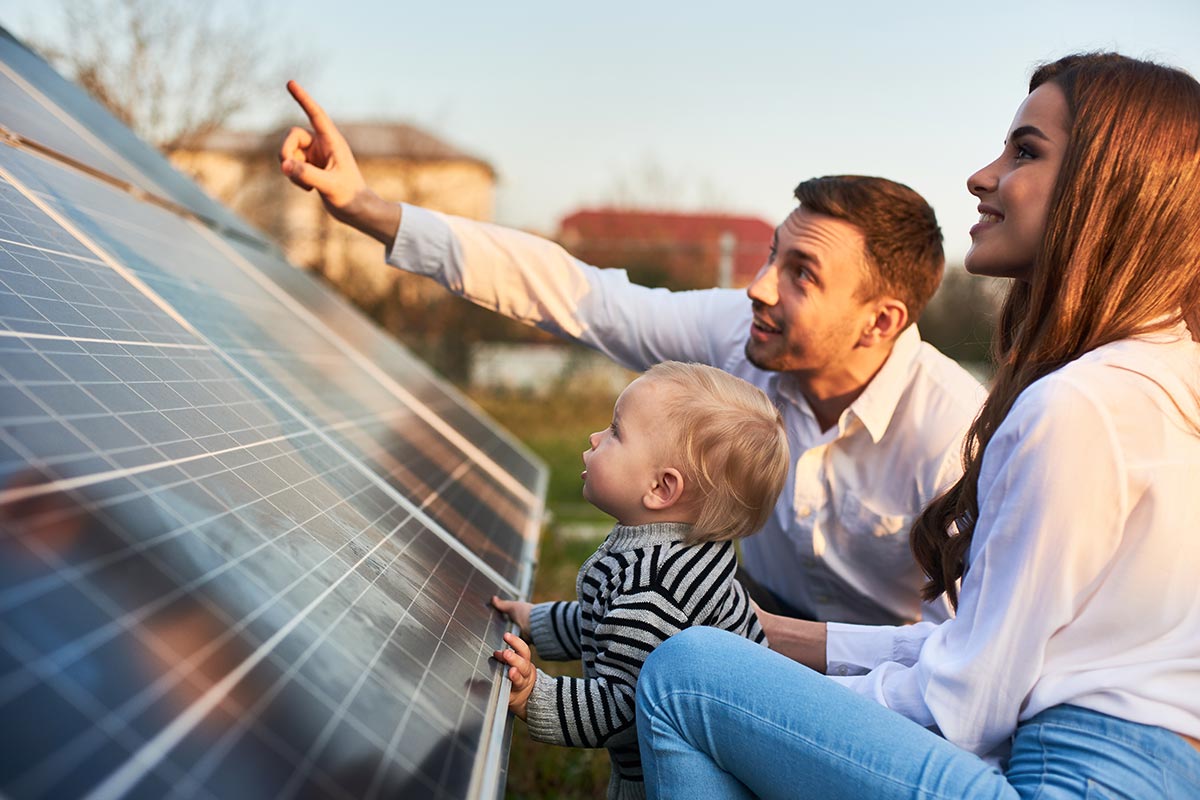Installing a solar system shouldn’t be a complicated process. Getting the right information and setting the right expectations will make the journey go solar fast, simple, and exciting. Understanding how solar energy will offset your utility expenses and choosing to hire a contractor you can trust are the two most important factors to consider. It’s the job of the solar contractor to ensure that every customer is fully knowledgeable with their solar installation. Homeowners that are planning to install solar should also do their due diligence by better understand the process – your solar installation checklist quick check list will help support your journey.
Understanding your Energy Usage
By learning more about how your home consumes energy, you’ll be better educated to make a decision on the type of solar system you’ll need. This means doing a little investigation into your home’s energy needs.
Review Electric Bill
Reviewing the history of your electric usage is the first step to better understand how much solar power your home needs is to have. By checking the last 12 month’s you’ll see your most recent energy spending habits and how much you’ve consumed energy. Generally, most electric bills will have higher usage in summer than winter since warmer and longer days mean more demand for energy from the utility. Every bill will have 12 months of usage in kilowatt/hour. Add the last 12 months of your electric usage and divide by 12. This will provide you with an average monthly consumption. This average (in kilowatt/hour) will determine the ideal solar system size you need to offset energy you receive from the utility.
[ ] Total last 12 months energy use from bill and determine monthly average
Be Energy Efficient
Every household uses energy differently based on location, square feet, and occupancy. How much energy a home needs can also depend on the what appliances are turned on and whether a home is properly insulated. By becoming energy efficient after you install solar, your system will process excess energy which will contribute to energy credits from your utility company.
Heating & Cooling
[ ] Check filter and replace if necessary
[ ] Adjust thermostat and adjust appropriate temperature (68 degrees recommended by energyupgrade.ca)
[ ] Use programmable thermostat with auto shutoff to reduce high peak rates from utility
Pool Pump
[ ] Consider replacing with variable speed
[ ] Adjust speed to lower rate
[ ] Activate during low or off peak rate Time-of-Use hours
Appliances and Electronics
[ ] Unplug appliances when not in use
[ ] Replace with high consuming with energy-efficient models
[ ] Use appliances during low of off peak hours if possible
Lighting
[ ] Install/replace with LED or CFL light bulbs
[ ] Install timers in areas of home for automatic shutoff
[ ] Use dimmer switch
Air Sealing
[ ] Find and seal cracks in walls
[ ] Weather strip windows and doors
[ ] Close dampers in fireplace when not in use
Exploring Your Solar Options
Once you’ve reviewed your bill and discovered ways to be energy efficient, the next step is to explore your options with solar. This means getting better understanding how the system system will be designed. First check if you have adequate roof space that faces south, that’s the first location you’ll want your panels on, followed by west then east facing roof locations. North facing roof will produce energy but 30-50% less depending on the roof’s slope.
[ ] Consider your home’s available roof space and how it’s oriented toward the sun.
Research Solar Contractors
A quick an easy way to select a solar installer is to gather information about them online. These days, every business has presence online. Having a strong social presence means the contractor is more reputable. Customers who publicly share their solar installation experience online will further add or subtract creditably for a particular contractor. Social media sites such as Yelp and Best Company and sharing a conversation with a neighbor or friend will help guide you to find the solar installer of your choice.
[ ] Compare at least 3 contractor’s online track record
[ ] Confirm contractor has active California State license
Once you’ve contacted a contractor, you’ll want to receive a proposal for you solar installation. You’ll have to share some details such as your home address, type of roofing and it’s condition.
[ ] Provide contractor 12 months electric bill
[ ] Request proposal for solar installation
Review Proposals
Getting quotes for multiple contractors can be a daunting and confusing process, but knowing what you want will help speed up the process so you don’t waste time with a contractor that can’t meet your objectives. A solar proposal will let you know how much solar energy your system will generate and at what cost. The right contractor for the job will explain as much detail about the proposal to educate you with your solar investment.
[ ] Learn the financing and leasing options available
[ ] Know what warranties are included (25 year warranty plans are ideal)
[ ] Ask which equipment options best meet your needs
[ ] Know the installation time frame
Review Service Agreement
The service agreement will ensure that the contractor will meet project expectations professionally.
[ ] System Cost
[ ] Payment Program (if leasing)
[ ] Warranty and Protection
[ ] Production guarantee
[ ] Safety and Liability
Be sure to ask the contractor questions about the service agreement if you don’t understand what’s written on it. If you have questions about the solar process and how much you can save by going solar, please contact LA Solar Group. We can help you estimate savings and ROI for buying your panels outright, leasing or using other financing arrangements.





